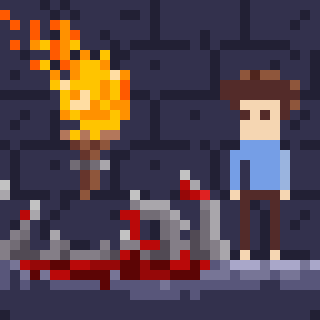Hey guys,
I've been looking for the right tool for creating my own pixel art, but I've been having a few difficulties finding the right one.
What I've tried so far:
- ProMotion NG - seems to have lots of features, but not sure how many of them are useful, or at least it's difficult for me to see how to use some of them (I only tried the Free version)
- Aseprite - nice and simple, but doesn't do things like tile maps and more complicated brush modes
- PyxelEdit - doesn't seem to do anything the other two wouldn't do as well, and lacks a shading tool
Then there's also Photoshop, but a lot of people seem to be using these editors made specifically for pixel art.
Is there some other program that I've missed? What do professionals at game studios use to create pixel art and its animations? When someone is creating an animation such as the one below, do they first draw the final version of the character? From what I've tried so far, changing the character after creating a bunch of frames is basically like starting over from scratch, and none of the tools seem to help with that.

edit: Please don't say to try everything and see which one I like the best. Being a complete beginner to art, it seems more reasonable to be told what is the tool to learn, instead of using my zero experience to pick the right tool :) I'm very much willing to learn, and just want to make sure I learn the right thing.








